Cosa è e perché sta cambiando il mondo.
Oggi vi parlo un po' della STAMPA 3D, attività di cui mi occupo quotidianamente da qualche anno, ma chi ha seguito il mio primo post lo sa già.
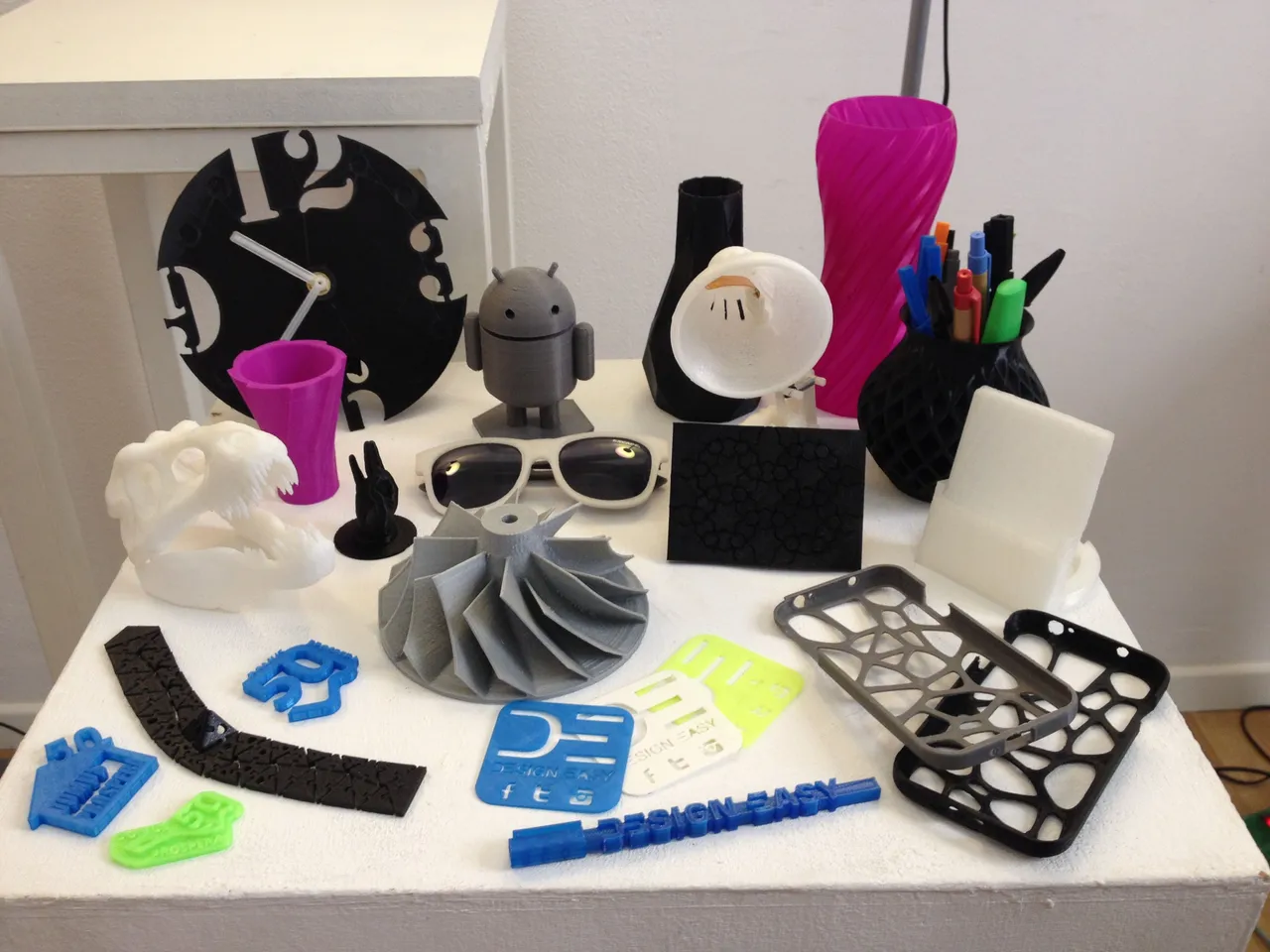
immagine realizzata dall'autore
La stampa 3D è la naturale evoluzione della stampa 2D.
Così come accadde per la stampa a caratteri mobili nel 1450, oggi segna un nuovo profondo cambiamento del processo produttivo. E’ dunque impossibile prevederne l'impatto a lungo termine.
Negli ultimi anni il costo delle stampanti 3D, inizialmente accessibile a piccole e medie imprese, si è considerevolmente contratto favorendone l'ingresso nel mercato dei prodotti desktop.
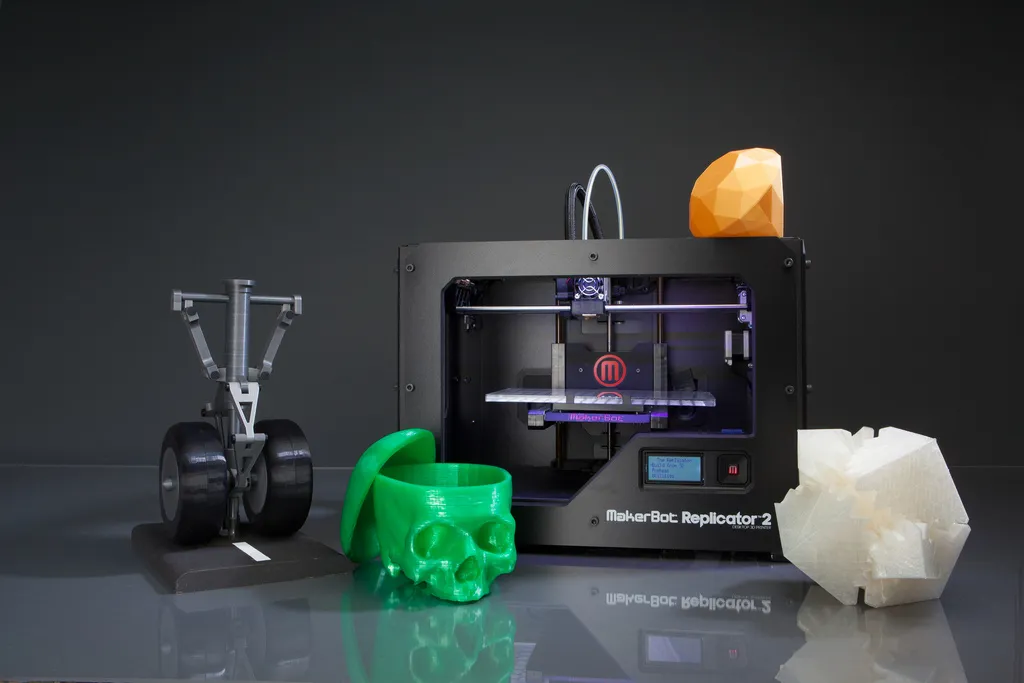
Stampante desktop
https://creativecommons.org/licenses/by/2.0/
Attualmente le stampanti 3D offrono un grande potenziale per la produzione in settori come la gioielleria, la progettazione industriale, l’architettura, il food, l’arte, l’automotive, l’aerospaziale, quello medico e dentistico e pressochè infiniti sono i possibili altri campi d’applicazione.
Ma vediamo di fare un po’ di chiarezza nella vasta giungla delle stampanti 3D.
Esistono diverse tecnologie per la stampa 3D e le loro differenze principali riguardano strettamente il processo di stampa.
In alcuni casi materiali plastici sotto forma di filamento vengono fusi (modellazione a deposizione fusa - fused deposition modeling, FDM). In altri casi si polimerizzano resine liquide con tecnologie diverse (Digital Light Processing, DLP - selective laser sintering, SLS). In altri ancora depositano polveri stratificate e rese solide tramite colla durante il processo stesso di stampa (Stampa a polveri).
Generalmente, i fattori principali presi in considerazione sono la velocità, il costo del prototipo stampato, il costo della stampante 3D, la scelta dei materiali, le colorazioni disponibili, ecc.
STAMPA PER DEPOSIZIONE DI MATERIALE FUSO (FDM)
E’ una tecnologia adoperata nella prototipazione rapida tradizionale che, mediante un ugello riscaldato deposita un polimero fuso su una struttura di supporto, strato dopo strato.
Questo tipo di stampa è ottimizzata per velocità, costo contenuto e facilità d'uso, dunque ideale per la visualizzazione dei modelli elaborati durante gli stadi concettuali della progettazione ingegneristica fino agli stadi iniziali del collaudo funzionale. Non sono richieste sostanze chimiche tossiche ed è necessario un lavoro minimo di finitura dopo la stampa.
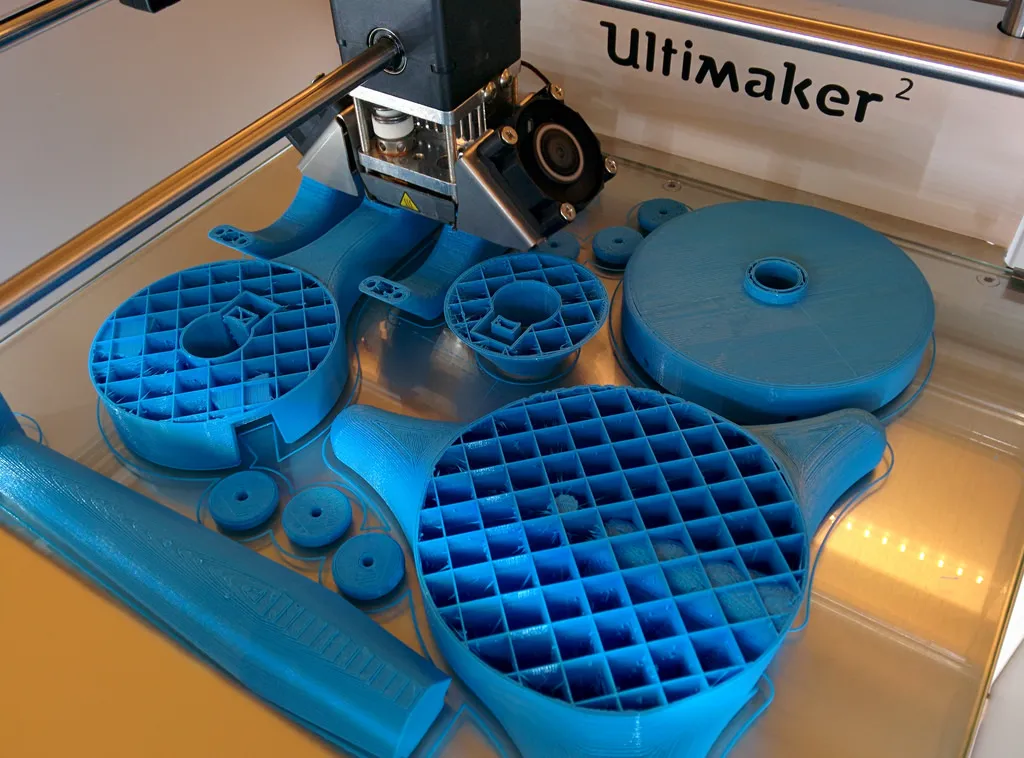
Stampa FDM
https://creativecommons.org/licenses/by/2.0/
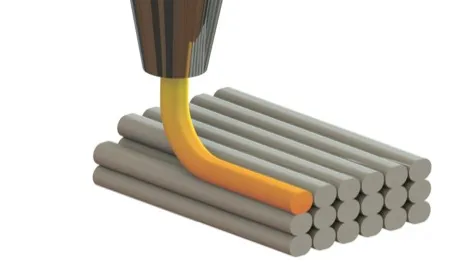
Stratificazione materiale estruso
DLP
Nel Digital Light Processing (DLP), una vasca di polimero liquido è esposta alla luce di un normale proiettore DLP. Il polimero liquido una volta esposto si indurisce e il piano di stampa si muove in basso finché il modello non è costruito. Il polimero liquido in eccesso è poi drenato dalla vasca, lasciando il modello solido
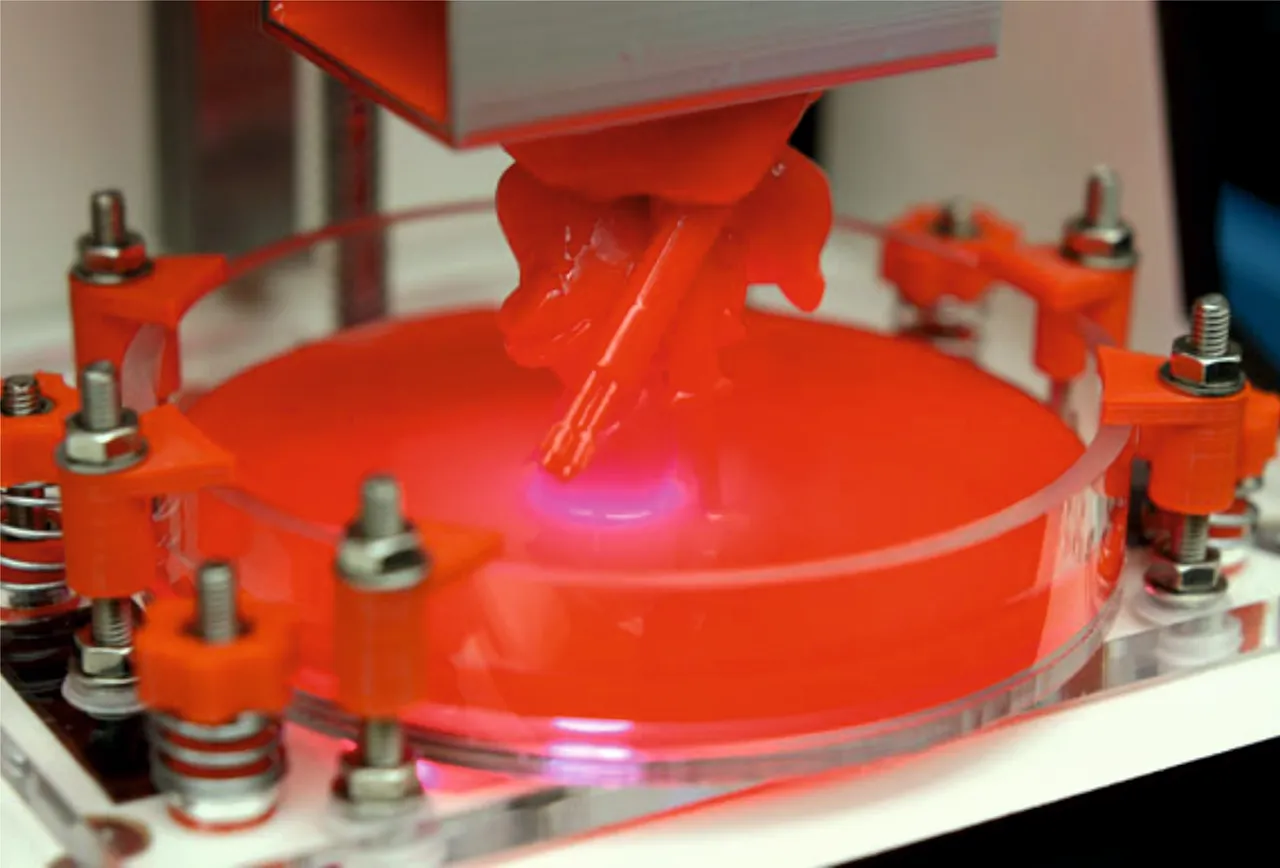
immagine realizzata dall'autore
STAMPA A POLVERI
In questo caso la stampante crea il modello spargendo uno strato di polvere (gesso o resine) e stampando a getto d'inchiostro un legante nella sezione trasversale della parte. Il processo viene ripetuto finché non è stampato ogni strato. Questa tecnologia è l'unica che consente la stampa di prototipi interamente a colori in quadricromia, ma è anche una delle più costose.
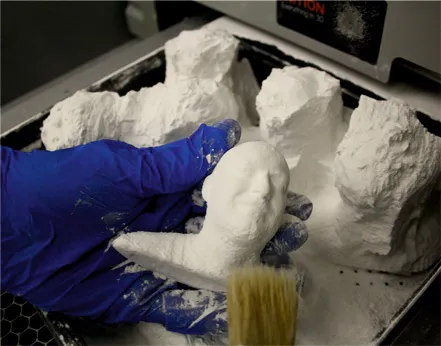
immagine realizzata dall'autore
COME LAVORA UNA STAMPANTE 3D
Una stampante 3D lavora elaborando un file, appositamente generato da un software di modellazione 3D e successivamente convertito in coordinate spaziali tramite un programma di slycing.
PRIMA DI STAMPARE
Per poter stampare in 3D un oggetto dobbiamo avere un modello 3D producibile con i più svariati software di modellazione 3D come Blender, Autocad, Rinoceros, ecc. Il file così ottenuto va poi salvato nel formato .STL e aperto in un software apposito che viene comunemente detto Slicer. Ne esistono di diversi tipi, sia open source sia proprietari e tra i più famosi possiamo trovare CURA, Slic3R e Repetier Host. In questi software imposteremo tutti i parametri della nostra stampante 3D e molti altri parametri, come lo spessore del layer, il riempimento, la velocità di stampa, ecc. Inseriti tutti i parametri possiamo mandare in stampa l'oggetto salvando il file in un formato apposito che possa essere letto dalla stampante, il GCode.
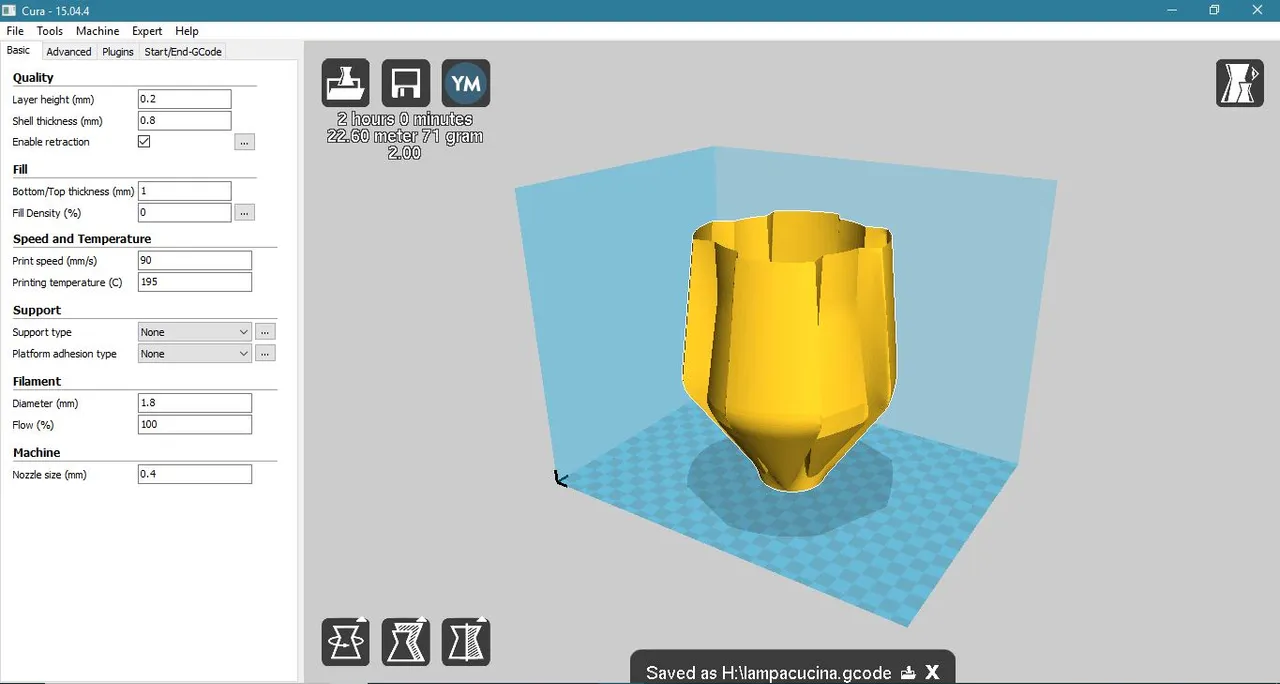
Preparazione del G-code per la stampa utilizzando CURA
immagine realizzata dall'autore
LE STAMPANTI 3D ED I LORO VANTAGGI
• Sono generalmente più economiche, talvolta più veloci, più affidabili e più semplici da usare rispetto ad altre tecnologie produttive.
• Riducono notevolmente i costi per la produzione di manufatti nel settore industriale, consentendo di arrivare rapidamente alla produzione definitiva degli stampi.
• Offrono la possibilità di stampare con diversi materiali dalle proprietà fisiche e meccaniche più svariate.
• Alcune delle più avanzate tecnologie di stampa 3D creano ormai prototipi in tutto e per tutto funzionanti ed esteticamente identici al prodotto finito.
Mi auguro che questo post susciti l'interesse sperato e sono pronto a rispondere a qualsiasi domanda o curiosità abbiate da pormi.
Buona serata e al prossimo post!!
Traduzione
What it is and why it is changing the world.
Today I'll talk to you a bit about 3D PRINTING, which I have been working on a daily basis for a few years, but whoever followed my first post already knows it.

image created by the author
3D printing is the natural evolution of 2D printing.
As happened for the movable type printing in 1450, today marks a new profound change in the production process. It is therefore impossible to predict its long-term impact.
In recent years, the cost of 3D printers, initially accessible to small and medium-sized businesses, has contracted considerably, favoring their entry into the desktop products market.

Desktop Printer
https://creativecommons.org/licenses/by/2.0/
Currently, 3D printers offer great potential for production in sectors such as jewelry, industrial design, architecture, food, art, automotive, aerospace, medical and dental engineering and almost infinite fields of application are possible.
But let's do some clarity in the vast jungle of 3D printers.
There are several technologies for 3D printing and their main differences are strictly related to the printing process.
In some cases, plastic materials in the form of filaments are fused (fused deposition modeling, FDM). In other cases liquid resins are polymerized with different technologies (Digital Light Processing, DLP - selective laser sintering , SLS). In others, they deposit powders stratified and made solid by means of glue during the printing process (Powder printing).
Generally, the main factors taken into consideration are the speed, the cost of the printed prototype, the cost of the 3D printer, the choice of materials, the available colors, etc.
PRINTING FOR STORAGE OF FUSED MATERIAL (FDM)
It is a technology used in traditional rapid prototyping which, by means of a heated nozzle, deposits a melted polymer on a support structure, layer by layer.
This type of printing is optimized for speed, low cost and ease of use, therefore ideal for displaying the models developed during the conceptual stages of engineering design up to the initial stages of functional testing. No toxic chemicals are required and minimal finishing work is required after printing.

FDM printing
https://creativecommons.org/licenses/by/2.0/

Extruded material stratification
DLP
In Digital Light Processing (DLP), a liquid polymer tub is exposed to the light of a normal DLP projector. Once exposed, the liquid polymer hardens and the printing plane moves downwards until the model is constructed. The excess liquid polymer is then drained from the tank, leaving the solid model

image created by the author
POWDER PRINTING
In this case the printer creates the model by spreading a layer of powder (gypsum or resins) and by ink-jet printing a binder in the cross-section of the part. The process is repeated until each layer is printed. This technology is the only one that allows printing of four-color prototypes, but it is also one of the most expensive.

image created by the author
HOW TO WORK A 3D PRINTER
A 3D printer works by processing a file, specially generated by a 3D modeling software and subsequently converted into spatial coordinates through a slycing program.
BEFORE PRINTING
In order to print an object in 3D we need a 3D model that can be produced with the most varied 3D modeling software such as Blender, Autocad, Rinoceros, etc. The file thus obtained is then saved in the .STL format and opened in a special software that is commonly called Slicer. There are different types, both open source both owners and among the most famous we can find CURA, Slic3R and Repetier Host. In these software we will set all the parameters of our 3D printer and many other parameters, such as the thickness of the layer, the filling, the printing speed, etc. Once all the parameters have been entered, we can print the object by saving the file in a special format that can be read by the printer, the GCode.

Preparing the G-code for printing using CURA
image created by the author
3D PRINTERS AND THEIR ADVANTAGES
• They are generally cheaper, sometimes faster, more reliable and easier to use than other production technologies.
• Significantly reduce the costs of manufacturing products in the industrial sector, enabling rapid production of molds to be achieved quickly.
• They offer the possibility to print with different materials with the most varied physical and mechanical properties.
• Some of the most advanced 3D printing technologies now create prototypes in all respects functioning and aesthetically identical to the finished product.
I hope this post arouses the interest you have been hoping for and I am ready to answer any questions or questions you may have.
Good evening and next post!!